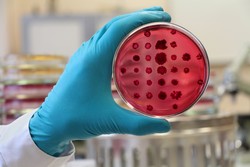Directed evolution in bacteria for designer proteins
Researchers of the DESB (Directed evolution in vivo enabled through genetic circuits in a synthetic biology approach) project came up with a novel approach. They decided to use E. coli as an in vivo mutagenesis system to produce proteins of optimal quality and desired property. A synthetic biology method was used to develop gene circuits to check mutagenesis rate and ensure selection stringency. To begin with, DESB developed and executed the Biopart assembly standard for idempotent cloning (BASIC) method for producing high-performance gene circuitry. This robust, versatile and simple DNA assembly method permits seven-part assembly with an unprecedented 90 % accuracy whereas four-part assembly has 99 % accuracy. The advantage of this method is its modularity as it allows researchers to grow comprehensive and universal part libraries and efficiently share them. The BASIC framework can be used to encode for promoter, ribosomal binding sites, gene variant and protein-tag libraries. Researchers used BASIC to develop genetic circuits that act as controllers of the genetic mutator system. They successfully demonstrated the feasibility of targeting a specific gene inside a living cell as evidenced by the deamination of cytosine to uracil. In addition, the green fluorescent protein (GFP) gene was targeted to reveal the effect of mutations on fluorescence. DESB work is groundbreaking as they have taken the first steps towards developing a self-evolving self-selectable system for producing proteins of interest, on an industrial scale. This should help increase exploration of mutational diversity and enable protein selection and optimisation via in vivo gene circuitry. Applications include production of novel chemicals, biomedicines, sustainable fuels and new classes of tuneable materials.
Keywords
Directed evolution, protein production, DESB, genetic circuits, mutagenesis

